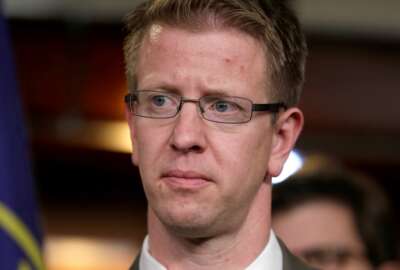
House IG tells committee to consider ‘tremendous opportunity’ to centralize IT services
The House inspector general told the committee negotiating larger purchases with a smaller number of vendors would allow members to leverage their buying power and...
Borrowing a page from executive branch agencies, the House Modernization Committee has considered moving its colleagues to agile procurement procedures and greater use of shared services, rather than have individual members purchase their own IT equipment.
“Our counterparts in the executive branch and the private sector have figured out that purchasing 1,000 computers yields a better price than purchasing 10 computers,” Committee Chairman Derek Kilmer (D-Wash.) said at Friday’s hearing.
While the Trump administration has taken steps to move agencies toward greater use of back-office shared services by rolling out Quality Services Management Offices, Kilmer said that in the House, “members and staff are too often relying on outdated, inefficient processes and systems to do their jobs, and that shouldn’t be the case.”
Michael Ptasienski, the House inspector general, said lawmakers have a “tremendous opportunity” to reduce technology acquisition and back-office costs by having the Office of Acquisitions Management, part of the Chief Administrative Office, put out an approved products list and roll out contract vehicles for office items like computers, printers, and copiers.
Negotiating larger purchases with a smaller number of vendors, he said, would allow the House to leverage its buying power and reduce costs.
“The current model puts significant administrative overhead on each member’s office. To address this, I think House officers and officials can be better positioned to help them or alleviate this burden,” Ptasienski said.
The end result would look similar to the General Services Administration’s Schedule 70 program, a contract vehicle that allows agencies to buy pre-approved IT products.
“We certainly see across the executive branch a move to shared services, whether it’s IT procurement or human capital service delivery, or even a centralized grants management approach, because we realize that now sometimes too many choices is actually inefficient, and there is value in scale,” said Terry Gerton, president of the National Academy of Public Administration.
On the Senate side, the Sergeant at Arms already bears responsibility for most of the chamber’s back-office functions, including Senate-wide IT contracting and cybersecurity. But that support role requires considerable resources: The office has about 800 employees and an annual budget of approximately $800 million.
Drew Willison, the former Senate Sergeant at Arms, said developing that same centralized contract authority for the House, with more than four times as many members, would be a challenge. But from a cost and cybersecurity perspective, he said a central authority makes sense.
“In a perfect world, in the Senate all information technology, hardware, software and security would be centrally procured, operated, maintained and updated. As a general rule, the more far-flung the decision-makers and the hardware, the more vulnerability there is. However, we don’t live in a perfect world, so we always did the best we could, given the demands of 100 highly particular bosses,” Willison said.
While the procurement in the Senate is done centrally through the Sergeant at Arms, members’ offices have a lot of flexibility in terms of what sort of systems they buy and use from an approved-products list.
These proposals, if implemented, would largely fall on the House CAO, which saw its resources strained in January when it helped bring the second-largest freshman class up and running with their IT needs.
The office has also fielded a growing number of requests for more modern office accommodations, like video conferencing capabilities.
Ptasienski said CAO could serve as a central hub for these services, but only if Congress gives the office the budget and resources it would need to carry out its expanded set of responsibilities.
“Members would vote with their wallets, if they weren’t getting the services they were provided. That, I think, is historically why things end up being decentralized, because they’re not satisfied with what’s provided centrally.”
But the proposals to centralize back-office functions don’t stop there.
Eric Petersen, a specialist in American national government at the Congressional Research Service, said the House should consider standing up a centralized human resources office responsible for recruiting, hiring and assigning duties to House staff.
A central HR office would remove a substantial administrative burden from each House member, but Petersen questioned whether that recommendation would gain momentum, “because the House appears to value member autonomy and independence over efficiency.”
NAPA, in reports published last year, emphasized the need for updating the civil service to stay current with emerging workplace trends. But Gerton said the legislative branch has the independence needed to carry out the group’s recommendations more quickly.
“In this space, Congress is in a unique position. As a separate branch of government, it already has the autonomy we advocate for in executive branch agencies to design its own human capital practices,” she said.
Meanwhile, the House Modernization Committee has another year to continue its operations. The House rule that created the committee was set to expire in February, but the lawmakers voted Thursday to keep it running through the end of the 116th Congress.
The committee so far has introduced two sets of recommendations and a bill that would put some of them into practice.
Copyright © 2024 Federal News Network. All rights reserved. This website is not intended for users located within the European Economic Area.
Jory Heckman is a reporter at Federal News Network covering U.S. Postal Service, IRS, big data and technology issues.
Follow @jheckmanWFED
Related Stories





